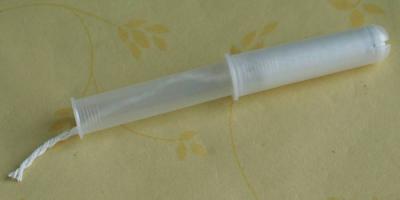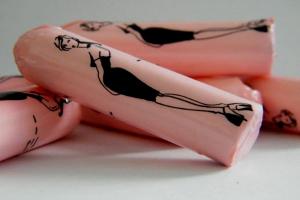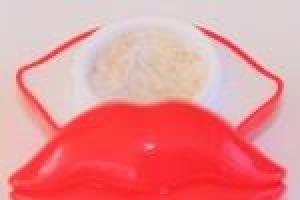Basic conditions for studying on this topic:
It is desirable that the child be able to count backwards (10, 9, 8, 7, 6, 5, 4, 3, 2, 1);
The child must recognize the graphic images of numbers (numbers);
It will be very good if by the time this topic is considered, the child will already be able to write numbers and numbers on their own.
IMPORTANT NOTE TO ADULTS: learning on this topic should be carried out gradually, analyzing previous results.
In order to explain to the child the composition of the number, it is convenient to use buttons, chips, chestnuts or coins, a sheet of paper and a pen are also needed.
Composition of number 2.
Put 2 buttons in front of the child and ask - how can you put these two buttons into 2 piles?
Child's answer: "There will be one button in each pile."
Confirm this and make the following entry on the sheet:Show this entry to the child and say that this is how we wrote down the composition of the number 2.
From this entry it can be seen that in each pile we had one button.
The composition of the number 3.
Question to the child: “Into which two piles can three buttons be decomposed?”
Answer: "In one pile there is one button, in the other - two."
You can also swap them.
Make a note on the sheet and show the child:

So we wrote down the composition of the number 3. Since the entries repeat each other (they just swapped the heaps), we cross out the extra entry.

This entry should be explained as follows: “In order to get the number 3, one must be added to two. And that needs to be remembered."
The simplest assignments for the composition of numbers 2 and 3:

The number on the roof here indicates how many points should be on each "floor". This means that in the left task, you need to draw one point and enter a unit, in the middle task you need to draw two points and enter a deuce, and in the last task, the child must draw one point and enter a unit.
If the child has the concept of addition and subtraction, the following conclusions can be drawn from the composition of the number 2:
2 = 1 + 1
2 – 1 = 1
2 is the whole, 1 and 1 are the parts.
For the number 3 - similarly.
3 = 2 + 1
3 = 1 + 2
3 – 2 = 1
3 – 1 = 2
Here 3 is the whole, and 1 and 2 are the parts.
Knowing the composition of the number can help in solving.
1 +
□
= 2
2 +
□
= 3
1 +
□
= 3
2 -
□
= 1
3 -
□
= 2
3 -
□
= 1
It is desirable to repeat the material in the next lesson. With the correct answers of the child, you can "move on."
The composition of the number 4.
Question to the child: “Into which two piles can 4 buttons be decomposed? Let's put aside one button with you and record the composition of the number 4.

The entries in the first column and the last column repeat each other. It is necessary to delete the excess:

This simplified notation of the number 4 must be remembered. The following conclusions can be drawn from this entry:
3 + 1 = 4
2 + 2 = 4
4 – 1 = 3
4 – 2 = 2
4 – 3 = 1
Invite the child to complete the task and examples similar to those discussed earlier:

Recall that the number on the roof indicates how many points should be drawn on each "floor". In the left example, you need to draw 3 points and enter the number 3.
The numbers at the bottom right indicate the number of dots that the child has completed.
Based on the composition of the number 4, the child can solve the following examples "with windows":
3 +
□
= 4
2 +
□
= 4
□
+ 1 = 4
4 -
□
= 3
4 -
□
= 1
4 -
□
= 2
If it is difficult for a child to independently solve such examples, even with prompts in front of him, try asking him such questions:
How much must be added to three buttons to make four?
How much does it take from four buttons to make three?
Knowledge on the topic “composition of a number” can also be consolidated on a walk or in other circumstances outside of training sessions.
Continuation:
Vorobieva Nina Fedorovna
When a child goes to school, mathematics becomes an important subject for him. And the first task of the teacher in this case will be to form the first-graders' calculation skills. Oral calculations are needed not only for further study of the subject, they form the personal qualities of the child. Therefore, it is necessary to train in calculations with the child every day. However, children do not always immediately understand what they want from them.
- Surely, your child has heard you count out loud at least up to ten. Or maybe he already knows the counting rhyme: "One, two, three, four, five, I'm going to look for you." Or perhaps he himself asks to count some objects: chairs in the room, steps on the stairs, seats on the carousel, flower beds on the street. If not, then invite him to count with you. It's good to count steps. Or step on a certain color tile and count at the same time. Or fallen leaves. Invent yourself, consult with your child on this issue and consider those items that are of interest to him.
- Even before school, you need to explain to the child what is the difference between numbers and numbers. Numbers are graphic representations of numbers. Moreover, there are only ten digits: from 0 to 9. 10 is already a number, indicated on paper by the numbers 1 and 0. Numbers show the amount of something. Explain to the child simply and clearly on objects of interest to him: fruits, toys, sweets.
- Simple addition and subtraction. Take a banana. How many bananas? One, write it down as 1. How many bananas will there be if you take one more banana? Count one, two. The correct answer is two bananas. Show the child this on paper: 1+1=2. Plus means that we take another such item, and the equal sign replaces the question "how much will it turn out?". And 2 means there are two bananas.
Now ask your child to treat you with a banana. How many bananas does he have left? Do the math. One. Show it on paper: 2-1=1. Minus means that we removed one such item. - After mastering the previous example, take 3 items already, for example, an orange. Show that 3 can be obtained in three ways: 1+2, 2+1 and 1+1+1. Be sure to count items with your child and choose items that are interesting to him for counting. As such things, you can buy special counting sticks. They are colorful and the kids love them. You can count money (let the child feel like an adult): one money plus the second, etc.
- After successfully entering the first numbers, explain all the others up to ten.
- Give your child a special poster: "The composition of the number" or draw it yourself. And you can not only draw, but also stick small objects: leaves, shells, candy wrappers. It's time to show your imagination. A self-made poster, firstly, will be remembered better, more clearly, and secondly, it will develop fine motor skills child, thirdly, will allow him to once again play with his mother.
- Draw houses for numbers. For example, a house for 4 looks like a tall rectangle with a roof. On the roof, draw the number 4. The house is five-story. On the first floor live 0 and 4, on the second - 1 and 3, on the third - 2 and 2, on the fourth - 3 and 1, on the fifth - 4 and 0. This method will allow the child to easily and quickly remember the composition of numbers, as well as play with the inhabitants of the house. You can make a second house later, only not with numbers, but with objects or drawn men, animals or circles. Or one house with four windows, for example. And put "tenants" in the windows - carved dogs, for example. How many dogs live in the house? 4. And how many dogs will be left if one went to the store? That's right, three and one window will remain free. So 4 occupied windows minus one dog equals 3 occupied windows.
- Buy your kid an abacus. Yes, yes, this old toy will interest him, because sorting out the knuckles is so interesting. This is not your fiftieth machine, such a toy is rarely seen in modern children. Abacus is a very necessary thing: you can use it to learn how to count and play in the “shop”.
- When the child can verbally count to twenty, then show him the written spelling of these numbers.
- Take 13 sweets, write down their number in numbers. Now remove 10 sweets and show that there are only 3 sweets left. 3 is the number of units and 1 is the number of tens.
For greater clarity, take a lot of small items: details from the designer, mosaics. Count 20 parts, write down this number. Show that it consists of two tens (the number of tens is indicated by the number 2) and does not include units (denoted by the number 0). Show how to read large numbers: 21 - twenty and one, that is, 20 + 1. - Probably the most difficult stage is to explain to the child how to get numbers greater than 10. Why 8 + 3 = 11. Why is it written like this? Explain that for convenience, large numbers are counted in tens. And that 8 and 2 make one ten. But it was necessary to add 3. We have already added 2, only one is not enough to 3. Therefore, it turns out that 8 + 3 is 8 + 2 and 1 more. 8 + 2 = 10, write it down on paper. And where to write another added unit? That's right, instead of zero.
Of course, it will be hard and incomprehensible for the child right away, but train. Clever and loving parent always finds a way to keep him interested. Not all at once, put off studying, offer to remember addition the next day. Several such trainings - and the child himself will be interested in adding large numbers.
The child loves to play football - great, count the goals. He likes to watch cartoons - count the series or characters. He likes to sculpt - count the pieces of plasticine. Likes to draw - count felt-tip pens, paints or brushes. Along the way, do not forget about little tricks: “Can I take one brush? How many brushes do you have left now? How many brushes do I have? And how many brushes are there in the room? So, playing and doing what you love, your child will learn the basics of mathematics.
It often happens that children, for one reason or another, cannot learn the composition of a number. Either the baby simply cannot concentrate, or you are using the wrong method. But the situation is very easy to fix.
How can a child quickly learn the composition of a number
What you need for the lesson:
- cards for the composition of the number;
- many identical toys and other small items;
- checkers or buttons of the same shape, but different color.
Instruction
- In the first session, use toys or household items. It can be cubes, pencils, cups, spoons. The type and size of the role does not play, the items should just be the same. Start with number 2. Have your child put 1 spoon on the table and ask what needs to be done to make 2 spoons. An older preschooler usually knows the answer, more younger child can be suggested. From what numbers can you add the number 2? If the child does not immediately understand, ask a leading question.
- Repeat the task with other items. The child must understand that the number 2 in any case consists of two units, regardless of whether he puts spoons, pebbles or cubes on the table.
- When the child begins to answer confidently, proceed to the study of the number 3. Its composition can be represented in three versions. You can lay out 3 spoons one at a time, add one to two or two to one. You can arrange items in different ways. If you imagine the number 3 consisting of three units, then pebbles or spoons can be placed at different distances from each other and even one pebble on another. Representing the same number as consisting of a pair of objects and one, put two together, and one - at some distance.
- Use checkers for practice. Invite your student to place 4 identical checkers on the board. And if you put 3 red and 1 black? You will also get 4 checkers. And if you take two of different colors, then there will still be four of them. That is, this number can be represented in several ways.
- Get number cards. They can be bought or made. They come in several types, and it is better that they are of two types. The split card consists of two halves. One depicts 1 object, the other - 1, 2, 3 and more exactly the same objects. The halves can be connected with a "+" sign, but the "plus" can be done separately. The second set is a set of pictures, which depict the same objects in one set, without any separation. When the child learns well to match the number and figure, you can make the same cards with numbers. There may be several sets to represent each number in different ways.
- Do classes regularly. Show your child a card that shows, say, 5 items. Offer to pick up pictures so that everyone together also has the same number of apples or circles. Change roles periodically. Let the child also give you tasks, and you diligently complete them. Make mistakes sometimes, your student must learn to control your actions.
- Do the same with numbers. Show, for example, the number 9 and in the same way as in the previous case, offer to find several options for its composition. Explain to the child that the larger the number, the more opportunities to make it up.
Photo gallery: number cards
It often turns out that the most difficult thing in this difficult topic is to find one suitable for a particular child in a variety of methods and options. And the child is still developing, so it is important to use as many channels of the child's sensory perception as possible in the educational process - hearing, sight, and touch, as well as to connect movement and speech. Something is left out, not used, and then suddenly it turns out that second-grade students also have difficulties when it turns out that the methods of the previous work did not work. The child has, for example, difficulties with mastering the addition and subtraction of two-digit numbers.
For parents who are just preparing their children for school or are already helping to do their homework and for tutors who are ready to "tighten their tails", this is my big post.
Book Ananiev B. G., Antropova M. V. and others."The initial teaching and education of children about the method of studying numbers and the method of studying actions in working on the first ten - largely explains the complexity of the topic.
The most common methods of studying the topic:
Abacus and Super folder with work algorithm
Number Composition with Numicon Patterns:
Explanation with Kuizener sticks
Montessori has developed a special material for this purpose - red and blue rods.
In addition to the mass of finished products like magnetic boards and educational games, you can always do something quickly with your child, for example, play with frame - ten. To see what games I play, you can see the blog.
Helps memorize numbers
training clip
Mnemotable - you can read about the technique
Everything is good on time and due attention should be paid to the composition of the numbers in preschool. A series of workbooks "Mathematical prescriptions" will be useful. Each number is dedicated to writing. Something you can print from the treasuries of educators on liveInternet:
composition of the number 10
composition of number 6
Excellent bright workbook"The composition of the number. Combinatorics. Preparation for school. For children 5-7 years old":
My favorite notebook for preschoolers:
workbook:
On the method of familiarizing children with the composition of the number -
Here you can read what teachers usually do in kindergarten .

|
| beads |
Number houses - the most popular method
Illustrative video about the arrangement of houses of numbers
The usual explanation of a teacher in preparation for school:
1. Draw on sheets of paper houses on several floors, on each floor of which there are two apartments (windows). On the roof of the house, write a number with your child and explain that this number on the roof is the owner of the house, who allows only the number of tenants that corresponds to the number-owner to settle on one floor. To get started, use counting sticks or matches to “settle” - this is more visual than just written numbers.
2. Fill the floors of the first house yourself, and then set this task for the child - he must try to resettle the tenants himself. Let the child pronounce the required amount at the same time, arguing something like this: “The owner of the house is the number 6, if 2 tenants live in one apartment on the floor, then 4 should live in the other.”
3. Change the number of tenants from floor to floor and repeat new number combinations with your child. In the house with the owner 6 there will be combinations 1 and 5, 2 and 4, 3 and 3.
4. Move from counting sticks or matches to written numbers. This is more difficult for children, so repeat the exercise patiently.
5. Gradually complicate the task. Close one column of windows and talk to the child about the neighbors of the numbers. So, if 3 lives on the floor with the owner 8, then his neighbor is 5. Gradually, the child himself will be able to name the necessary numbers.
6. Hang the number houses in the apartment so that the child sees them as often as possible.
7. From time to time turn over one of the houses and ask the child to draw a house, remembering the composition of the number, on a piece of paper from memory.
Options for number houses for games and demonstrations:
poster with towers
a small poster with a 2 + 5 entry
big cards with different houses
| cards |
| download colored number houses |
Interactive presentation "We populate the houses" - by clicking on the number-neighbors appear
colorful posters with houses and counting material.

|
| download houses |
Different tables for studying the composition of a number:

small table
Online simulators will help students quickly remember the topic:
trainer with lights
and number houses
Simulator: examples and equations
Exercises:
lotto with pictures

|
| idea |
| simple game |

|
Understanding the composition of the number is the key to correct and clear written and oral counting. Officially, when enrolling in school, a child is not required to understand mathematics, however, most kids go to grade 1, owning elementary arithmetic skills. Helping a preschooler learn how to count up to 10 and the composition of this number, you greatly facilitate the beginning of his studies. There are several effective methods that allow learning in the form of a game or in other everyday situations. Let's find out how to interest the child and explain to him the composition of the number.
When to start explaining to a preschooler what the composition of a number is?
At the age of 5-6 years, children already know numbers well, get acquainted with simple arithmetic operations. It is during this period that it is worth taking a little time to exercise and explain to the child the composition of numbers up to 10. However, it is important that the baby has already mastered:
- direct verbal counting up to 10;
- countdown from 10 to 1;
- recalculation and counting of objects;
- the composition of the number by units (for example, 2 consists of 1 and 1, 3 - from 1 and 1 and 1).
All these skills indicate that the child can already explain the composition of any number within 10.
What is useful for homework?
Classes will become more effective if you prepare in advance and collect the necessary educational material:
- counting sticks;
- game cubes;
- cards with images of numbers;
- multi-colored pebbles or buttons;
- abacus;
- houses for numbers.
You can purchase ready-made development kits in stationery or toy stores, or make all the necessary items with your child. The second option is preferable.
Effective Methods
It is necessary to explain the composition of the number 10 gradually, dividing the training into several logical blocks. In the first lessons, attention should be paid to the numbers 2 and 3, their relationship and possible combinations. Then you can proceed to classes with visual cards and after that connect number houses.
Lesson 1: mastering the numbers 3, 2, 1
Take your baby's favorite toys and things (cubes, dolls, cars). Start the exercise by analyzing the number 2 and show the child in what ways it can be obtained:
- Put one item on the table in front of the baby and ask the child to make it so that there are two of them. Usually it is not difficult for him to guess how to cope with the task. Give a hint if needed.
- Explain to your child that 2 is a number that always consists of a pair of ones.
- Ask the child to put 2 objects they like on the table.
- When the deuce is fixed, proceed to the study of the triple. Tell your child that if you add 1 to 2, you get 3. Put two coins in front of him and another one next to him. The kid must learn that there is no difference between 3 coins together, 2 with 1 or 1 with 2.
Gradually complicate the task. Get a four in game form as easy as three. This is where chess or checkers can help. Invite the child to choose 2 shapes of the same color (white), and then repeat the task. Ask: how many chess will remain if 1 light chess is replaced by 1 dark? What happens if you combine 2 black and 2 white pieces? In the end, he must understand that you can get the number 4 for every possible permutation.
It is worth moving on to the next block of tasks when the baby realizes that all these actions will lead to a result known in advance:
- 2 is 1 + 1, 2 + 0;
- 3 is 2 + 1, 1 + 2, 3 + 0;
- 4 is 1 + 3, 2 + 2, 3 + 1, 4 + 0.
In the same way, explain the remaining numbers up to 10.
Task 2: number cards
At this stage, the child should already understand that by adding different numbers, you can get any result. But when should you know the composition certain number, you need to go from the opposite - from a previously clarified answer. Together with him, you need to analyze all pairs of terms leading to a single result. Number cards are great for this. There are several training options:
- Draw on the cards, for example, 5 butterflies and invite the child to collect the right amount from the proposed blanks.
- Invite him to independently collect combinations several times, in which their sum will eventually equal 5.
- Ask your child to explain to you how to get a number. Make mistakes, kids will have to use all their abilities to figure them out.
The last block of tasks should be started when the child can select all the options for the composition of the specified number.
Task 3: number houses
Arithmetic houses perfectly help to finally understand and consolidate in the child's knowledge the concept of the composition of any number, as well as develop the skill of oral counting.
The house for numbers is a building with a roof and several floors with apartments in two rows. The height of the structure depends on the number to which you need to match all possible combinations of numbers. To explain to a child the composition of the number 2, it is enough to draw a house with two floors (0 + 2, 1 + 1) and so on.
Blanks of houses can be found in math textbooks or made independently from cardboard.
How to build a lesson:
- Put an empty house on the table, placing a card with a number from 2 to 10 (let it be 6) in its roof.
- Explain to the child that at each level there are as many people in the apartments as it is written on the roof.
- Set the condition: only one person lives in 1 apartment on the ground floor. The kid needs to think and determine how many tenants live in apartment number 2 (the correct answer is 5).
- Now that the algorithm for solving the problem is clear, ask the child to populate all the remaining apartments, changing the initial number of tenants on each new floor. As a result, there will be 2 and 4 tenants on the 2nd floor, 3 and 3 on the 3rd, and 0 and 6 on the 4th. Thus, the baby will be able to master all the existing combinations of numbers.
A small life hack: tell us that any number always consists of 1 and the previous digit in order. So, if you want to find out the composition of the number 7, the first answer is immediately ready: 7 is 1 and 6.
When all the pairs of numbers and the composition of 10 are mastered, you can complicate the tasks.
Exploring the second ten
If you managed to explain to your child what the mathematical composition of a number is, then you should move on to one of the most difficult moments - working with tens. The kid will definitely ask why 6 + 5 = 11, because of what it is called and written down. First of all, tell us that for convenience, large numbers are considered tens. For example, 6 and 4 are one ten. Since the task required adding 5, and we have already added 4, only one is missing. Therefore it comes out:
- 6+5 is 6+4 and 1 more;
- 6+4=10;
- we write the last unit instead of 0, it turns out 11.
At first, the child will not understand anything, but after a while he will learn the basic principle of working with dozens. You can make the problem easier with a visual exercise:
- ask to count 10 sweets and put them in one bowl;
- now you need to put aside 7 more goodies in another container;
- under each bowl should be placed a card with the image of a number corresponding to the number of sweets;
- ask the kid to put everything together and say how many sweets it turned out;
- for better understanding, explain that 10 in a two-digit count means 1;
- correct option: the child writes one and 7 next to it, which means 17.
Similar examples can be carried out with a large number of objects. For example, a preschooler should know that 32 is 3 tens plus 2 more ones.
How to help a child?
Numbers 2 to 10 in Everyday life are very common, and learning to count is largely a creative process. It is easy to help with the development of numbers even without buying special devices:
- Does your child like sports? Count with him the number of goals scored in the goal.
- Does the child love nature? Look at the trees on the lawn, compare which side has more of them and which has fewer.
- Does your child always draw something? Invite him to draw a certain number of objects on a sheet. Interested in modeling? Ask to make a figurine with 3 paws, 2 tails and 1 ear.
- Cunning. Throughout the day, ask your child, “If I take one cookie from you, how many will you have left?” and the like.
In a comfortable game atmosphere, the child will quickly figure out the composition of all numbers and will count 1 2 3 4 5 and up to ten correctly.
If your baby is not good at mental counting, then you can assume problems with thinking, attention, or lack of concentration. To direct energy in the right direction will allow games from BrainApps. The service offers over 100 simulators that allow you to develop and improve your intellectual abilities. After registering on the site, select the required category of games:
- To improve memory. Simulators such as "Numeric coverage", "Memorize and click" and "Find a pair" will develop memory capacity, improve its accuracy and improve attention span.
- For the development of thinking. The games "Fruit mathematics", "Comparison of numbers from memory" and "Movement" will improve visual and spatial memory, develop logic and teach the child to quickly find answers to the questions posed.
- To improve attention. Find the Shape, Space and Concentration simulators will help your child concentrate better and direct attention in the right direction.
Joint games with a preschooler online are not only exciting, but also useful hobby. The child will be able to develop, achieve goals and compete with you or peers. All you need is a network connection and free time.
Understanding the importance of explaining the composition of numbers, try to adhere to the proposed recommendations that will help the preschooler calmly master and remember new information:
- Everyone has crises, but you need to remember that this is a temporary phenomenon.
- Let's have more freedom. Often the requirements of parents do not match the capabilities of the baby. Think about whether all your prohibitions are justified.
- Consider children's opinion. It must be clearly understood that the preschooler has his own opinion and judgments. Try to accept them.
- Forcing is ineffective. Edification and commanding tone during classes will not give a positive effect. If the kid does not want to learn numbers and examples with the numbers 1 2 3 seem scary to him, find out what is the reason. Explain why and why you need to study.
- Patience and optimism are your best companions. Good mood, the atmosphere of love, support and mutual understanding direct aspirations in the right direction.
- Show your kindness.
- Find and analyze bugs together.
- Discuss options and ways to fix bugs together.
- Support and express confidence that he will definitely succeed.
Do not forget to consolidate the results and include educational cartoons and other videos in the training program.








